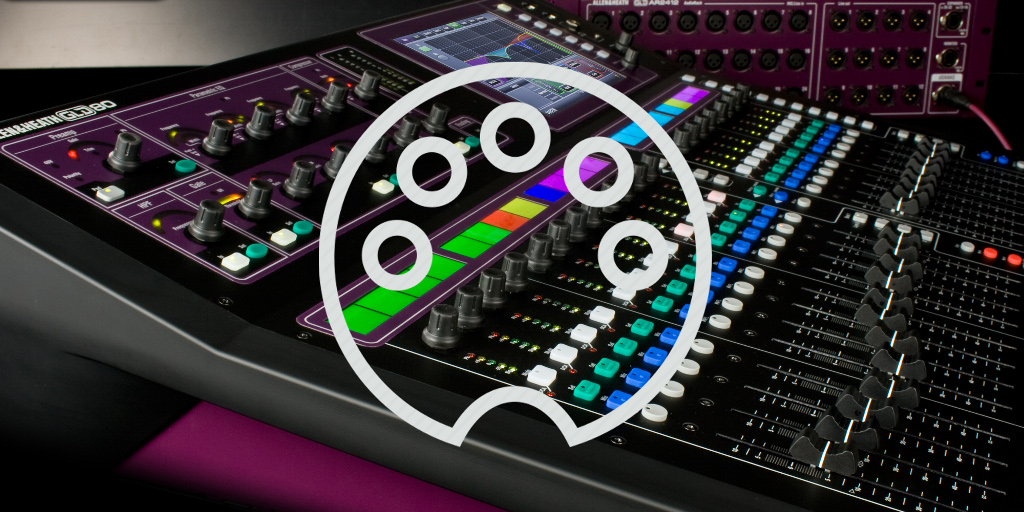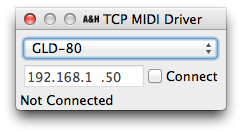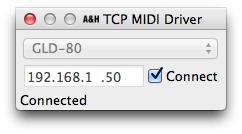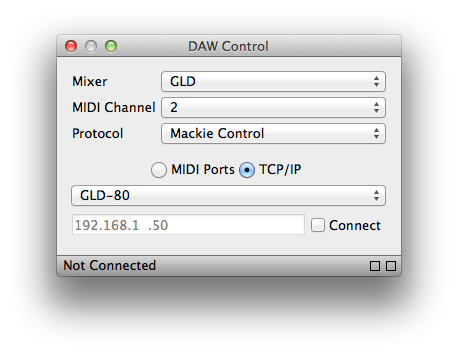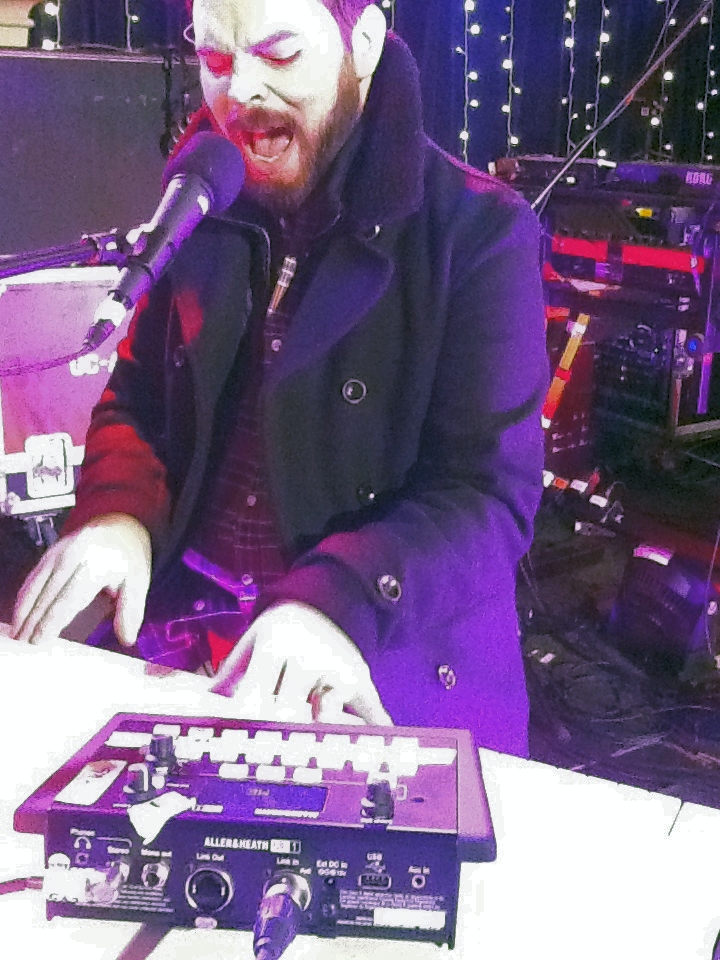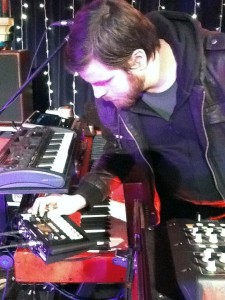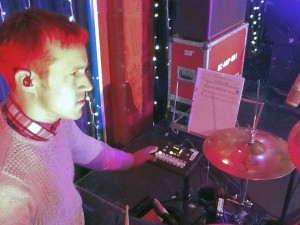IP6 and IP8 programming examples
2016/08/31 in Tips and Tricks
The IP6 and IP8 open up a new world of applications for dLive. If you haven’t heard of them yet, check them out on our website here and here. The dLive Firmware Reference Guide is a useful resource to understand how they are programmed, for example the difference in setting an IP remote under the Surface or MixRack menu (regardless of where it is physically connected).
This article takes some of the typical applications of IP remote controllers and describes how you would go about configuring them. Each application is available as an example Scene in a dLive Show file here.
IP6 or IP8 for volume control in a venue
Let’s start with the basics and assume you want an IP6 to provide control for day-to-day, untrained operators in a venue. For example, to set the levels of microphones and music sources. I would set this up under MixRack / IP Controller so that the IP6 will work with or without a dLive Surface.
In the Quick Setup tab, I can hold down the Setup key (or click Setup in Director) and touch on the screen to customise the set of functions I want to assign to the IP6 strips, prior to assigning the strips. I will leave the Mix Channel Type to the default setting (Main LR), and set the Upper Strip Key Function to Mute, and the Lower Strip Key Function to… well, for the time being, Unused.
Now I can close the menu, choose the number of Layers (1 is enough for this example), and drag n drop the strips I want. I can test everything it’s working as expected in the Simulator tab, even before a physical device is connected.
I can also go to the Advanced tab, and change any key or rotary function individually. In this example we have two rows of unused keys so you might want to set these to recall specific Scenes for different uses of the room (conference, cinema, presentation) or source selection.
IP6 for personal monitoring
The IP6 makes a perfect personal monitoring controller. All you need to do is assign the Send levels and Pans of multiple channels or groups to a specific mix.
Set this up under MixRack / IP Controller. In the Quick Setup tab, customise the set of functions (prior to assigning the strips) as follows: Mix Channel Type to Stereo Aux 1, Upper Strip Key Function to Send Level Up, Lower Strip Key Function to Send Level Down, and Rotary Shift Function to Pan. You don’t want Mutes or PAFL here because they would be somewhat disruptive to the FoH mix! Close the menu, choose the number of Layers (let’s use all 6 now), and drag n drop the strips. Again we can use the Simulator tab to check it all went according to plan. This IP6 will now control the monitor mix for Stereo Aux 1. The two rows of keys on the strips can be used as an alternative mean of tweaking levels i.e. as a ‘more me’ or ‘more bass’ button. The bottom row of keys will select the Layer.
Personal monitoring is contagious. Once you have one on stage, everybody else will want the same, so get ready to set up multiple IP remotes. They key thing here is remembering that each one will need its own unique IP address and, preferably, name. You can do this by connecting them one by one on the dLive and configure their Unit Name and Network settings using the IP Controller screen, OR by connecting a laptop directly to the units and pointing your browser to the default IP address 192.168.1.72 (IP6) or 192.168.1.73 (IP8). The Getting Started Guide in the box goes through all of this.
IP8 as a Surface extender / sidecar
On to another interesting application. Say I’m a monitor guy and I want to use as many strips as possible on my Surface for Inputs, while the IP8 controls my Aux master levels. This time I want to set up the IP8 under Surface / IP Controller, so that it shares the Sel and Mix functions with the dLive Surface. I can customise the set of functions in the Quick Setup tab (prior to assigning the strips) as follows: Mix Channel Type to Main LR, Upper Strip Key Function to Sel, and Lower Strip Key Function to Mix. I’ll set the number of Layers and drag n drop all my Aux master strips. As you can see in the Simulator tab, this IP8 now controls my Aux master levels. Pressing Sel on an Aux master will select that Aux for processing control on the dLive Surface (for example to tweak a GEQ). Pressing Mix on an Aux master will make the Aux the active mix on the dLive Surface (sends on faders).
IP8 and Director – a great combo
More and more engineers are interested in a ‘flyable’ solution for tours and festivals. A number of them are happy to mix on a laptop or tablet running dLive Director, but some lack the tactile control of real faders. Not a problem if you have an IP8 in your bag. In Director, I’ll set up an IP8 under Surface / IP Controller, so that it shares the Sel and Mix functions with the Surf… erm, Director (confusingly). I can customise the set of functions in the Quick Setup tab (prior to assigning the strips) as follows: Mix Channel Type to Main LR, Upper Strip Key Function to Mute, and Lower Strip Key Function to PAFL. Or I can choose to assign the Lower Strip Key Function to Sel, so that pressing Sel on a strip will select the channel in Director! Finally I’ll set the number of Layers to 6 and drag n drop up to 48 channels or masters.
What about controlling multiple monitor mixes?
One thing to note is that the Mix function on IP remotes will only change the active Mix in the dLive Surface or Director. It does NOT change the functions of the faders on the IP remote i.e. there is no ‘sends on faders’ flip on IP remotes – at the moment of writing (firmware V1.3) all faders / rotaries are statically assigned to a function. The workaround to control multiple mixes on a single IP remote is to use Scenes. You can prepare a bunch of Scenes which recall different assignments to the IP device, for example the same inputs but Scene X is Main LR levels, Scene Y is sends to Aux1, Scene Z is sends to Aux2 etc. Then use a spare row of keys to recall these Scenes. I’ve done this with Scene 13 and higher in the example Show file (see IP6 under MixRack / IP Controller).
Note that by default the IP assignments are Safe in the Global Scene Safes, to prevent unwanted changes to the IP behaviour at Scene recall. For this example to work however, you want them to follow Scene automation (not Safe). You also want the specific Scenes you created to Block Everything BUT the IP Assignments in their Recall Filters, so they won’t affect anything else.
Sounds complicated? Take a look at the example Show file here (I’ve used the first IP location in each example, either in Surface or MixRack as described above) and if you are in trouble, get in touch with Support and we’ll be happy to help.
